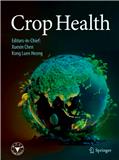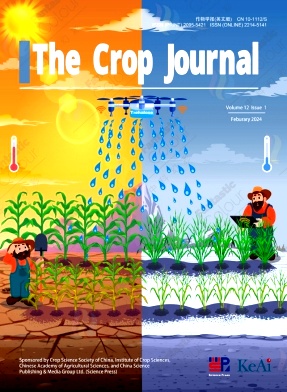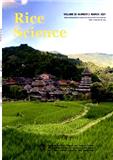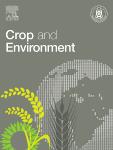
作物健康(英文)(Crop Health)(国际刊号)(2026年6月30日之前不收版面费审稿费)杂志
- 主管单位:
- 主办单位:
浙江大学
- 国际刊号:
2948-1945
- 国内刊号:
- 创刊时间:
- 期刊类别:
- 出版社:
- 主编:
- 发行周期:
不明确
- 审稿周期:
个月
- 被引次数:
- 邮发代号:
- 全年定价:
- 他引率:
- 邮编:
- 影响因子:0
- 期刊分类:
- 发文量:
- h指数:
- 立即指数:
- 引用半衰期:

浙江大学
2948-1945
不明确
个月
--------https://www.editorialmanager.com/crop
《作物健康(英文)(Crop Health)(国际刊号)(2026年6月30日之前不收版面费审稿费)》期刊已被查看: 次
杂志社官网:https://www.springer.com/journal/44297
投稿邮箱:crophealth@zju.edu.cn(官网邮箱)
主管单位:
主办单位:浙江大学
地址:
邮编:
邮发:
全年定价:;欢迎广大学者朋友联系作物健康(英文)(Crop Health)(国际刊号)(2026年6月30日之前不收版面费审稿费)杂志社投稿订阅!
注意:本站并非《作物健康(英文)(Crop Health)(国际刊号)(2026年6月30日之前不收版面费审稿费)》杂志社官网,不提供征稿投稿服务,仅整理介绍该杂志内容!投稿请直接咨询杂志社!
1、该刊只有国际刊号!
2、投稿方式:在线投稿。
3、官网网址:https://www.springer.com/journal/44297
(微信公众号信息)
4、投稿系统:https://www.editorialmanager.com/crop
5、官网邮箱:crophealth@zju.edu.cn(编辑部)
6、期刊刊期:官方暂未公布刊期信息。
7、微信公众号信息:2026年6月30日之前所有稿件均免收文章处理费。
2023年5月4日星期四
高起点国际期刊Crop Health扬帆起航!
【微信公众号信息】
高起点国际期刊Crop Health扬帆起航!
作物健康Crop Health 2023-04-19
高起点综合性国际期刊《Crop Health》打造植物保护领域国际旗舰学术平台
国家《“十四五”规划与2035远景目标纲要》把粮食安全作为国家安全的重要基础,首次把粮食综合生产能力纳入经济社会发展主要指标。植物保护对于确保我国粮食安全、实现有害生物可持续治理、提高粮食综合生产能力和保护农业生态环境均具有重要意义。
为填补我国在植物保护领域综合性国际期刊的空白,构建一个由我国主导的植物保护国际学术交流平台,推动我国在本领域的理论创新和科技进步,加快本领域国际领军人才的培养,更好地向全球展示国家软实力,提升我国国际学术影响力和地位,近日,由浙江大学植物保护学科牵头,联合国内外其他植物保护优势学科、浙江大学出版社和Springer Nature集团创办的植物保护领域高起点综合性国际期刊《Crop Health》正式上线。
01期刊简介
《Crop Health》聚焦作物病虫害、非生物胁迫、抗性育种和工程、土壤污染修复等方面的基础研究和技术创新,致力于发表与作物健康相关的高水平科研成果与前沿进展,特别关注跨学科的原创研究,目标是打造植物保护领域国际旗舰学术平台。
02编委会团队
期刊由浙江大学陈学新教授与国际水稻研究所Kong Luen Heong院士担任主编;贵州大学宋宝安院士、浙江大学马忠华教授、浙江大学王蒙岑教授担任执行主编;Shengyang He、Harvey Millar、Franco Pennacchio、Christian Pirk、Mike Strand、康乐、朱有勇、陈剑平、康振生、柏连阳等院士担任顾问委员,以及国内外10位专家担任副主编、50余位专家担任编委。
03欢迎投稿
期刊实行开放获取(OA)出版模式,所有文章都将进行严格的同行评阅,即日起至2026年6月30日之前所有稿件均免收文章处理费(APC)。
《Crop Health》欢迎国内外学者积极咨询和投稿,共同为构建一个由我国主导的高水平国际学术交流平台不懈努力。
期刊主页:
https://www.springer.com/journal/44297
编辑部邮箱:crophealth@zju.edu.cn
Submission Guidelines投稿指南
【官网信息】
Submission guidelines
Instructions for Authors
Article Types
Crop Health accepts submissions of the following article types:
Article
An Article is a substantial novel research study, with a complex story often involving several techniques or approaches. Format: Main text – up to 4,000 words, excluding abstract, Methods, references and figure legends. Abstract – up to 300 words, unreferenced. Display items – up to 6 items (figures and/or tables). Article should be divided as follows: Introduction (without subheading), Results (with subheadings), Discussion (without subheading) and Methods. References – as a guideline, we typically recommend up to 80. Articles may be accompanied by supplementary information.
Letter
A Letter discusses an important and timely research result, but is less substantial than an Article. Format: Main text – up to 2,000 words, excluding abstract, Methods, references and figure legends. Abstract – up to 150 words, unreferenced. Display items – 2-3 items (figures and/or tables). Letter should be divided as follows: Introduction (without subheading), Results (with subheadings), Discussion (without subheading) and Methods. References – as a guideline, we typically recommend up to 40. Letters may be accompanied by supplementary information.
Review
A Review is a comprehensive, balanced and scholarly survey of recent developments in a research field. It should not be dominated by the work of a single laboratory, and particularly not by the authors' own work. The scope of a Review should be broad enough. Format: Main text – 3,000-5,000 words. Display items – up to 4 items (figures and/or tables). References –as a guideline, we typically recommend up to 150.
Perspective
A Perspective is a format for scholarly reviews. The papers do not meet the criteria for a Review but provide synthetic overview, critical commentary, and/or future perspective are normally published as Perspectives. Format: Main text – up to 3,000 words. Display items – up to 2 items (figures and/or tables). References –as a guideline, we typically recommend up to 50.
Some other types of manuscripts, e.g.
Editorials, are usually commissioned, but suggestions may also be submitted for the editors' consideration. These papers, classified as “Editorial Materials”, do not contain primary research data and thus do not undergo peer review.
……
更多详情:
https://www.springer.com/journal/44297/submission-guidelines
作物健康(英文)(Crop Health)(国际刊号)(2026年6月30日之前不收版面费审稿费)杂志被以下数据库收录:

主办中国作物学会、中国农业科学院作物科学研究所、中国科技出版传媒股份有限公司级别:CSCD,科核,高T2
影响因子:1.613

主办中国水稻研究所级别:CSCD,科核,高T3
影响因子:1.816

主办中国农业科学院油料作物研究所级别:CSCD
影响因子:0

主办当代贵州期刊传媒集团有限责任公司级别:省级普刊
影响因子:0

主办河南大学和科爱出版集团级别:
影响因子:0

主办中国农业科学院棉花研究所、中国农学会级别:国级普刊
影响因子:0.86

主办华中农业大学级别:
影响因子:0
杂志社官网:https://www.springer.com/journal/44297
投稿邮箱:crophealth@zju.edu.cn(官网邮箱)
作物健康(英文)(Crop Health)(国际刊号)(2026年6月30日之前不收版面费审稿费)不是核心期刊,级别是:, 是:分类下的
我们不是《作物健康(英文)(Crop Health)(国际刊号)(2026年6月30日之前不收版面费审稿费)》杂志社。本站主要从事期刊信息展示与期刊推荐,不是任何杂志官网,直投稿件请联系杂志社。本站仅提供免费的学术指导、论文辅导、期刊投稿信息整理收集服务。
期刊发表的成功与否,主要取决于文章内容的质量。编辑老师会根据研究领域、创新性等多因素进行考量。优化投稿流程,避免频繁碰壁,缩短发表周期,节省您的宝贵时间,让您的学术成果快速发表
ChatGPt在科学论文写作中的潜在应用、实际效果以及面临的挑战与极限性。至于,Sci论文能用ChatGPt写吗?能用,但要注意ChatGPt写论文面临的挑战和
评职称用的正规课题材料申请流程就收到了相关主管部门下发的课题申报红头文件,然后开始执笔撰写申报材料,写好之后提交到单位科研科领导审核通过之后,单位就会帮你依托单位提交到相关部门去申报,申报公示立项,这是课题申报的流程。